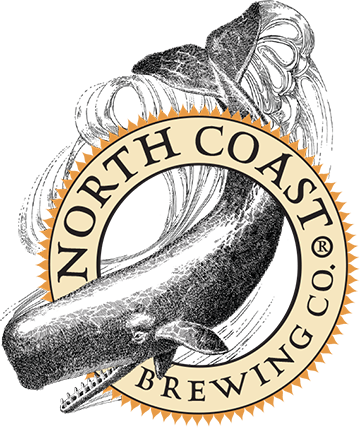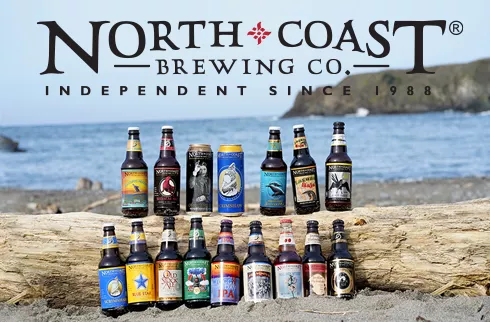In the craft beer industry, North Coast Brewing Co. has consistently gone against the grain, both figuratively and literally.
Bill Swindell, The Press Democrat
Photos by Alvin Jornada
When other West Coast brewers went to more hoppy beers, the brewery didn’t try to keep up in the arms race for the most hop-forward India pale ale (IPA). It preferred to keep the focus on other styles of beer such as a Russian imperial stout, a pilsner and saisons (a kind of pale ale).
When others went to locales that were closer to larger cities and major transportation hubs, North Coast stayed in its preferred spot in Fort Bragg, forcing beer lovers and distributors to trek hours up the coast to make their visit.
And while breweries have recently built facilities in other states to corner more of a national market — and even international in a few cases — North Coast has felt no desire to do the same even in an industry that had an 18 percent increase in volume from 2013 to 2014.
Yet those decisions have played a major role in its success, as the brewery is consistently lauded by critics and nabs awards for its beer quality. It has now grown to producing a little more than 66,000 barrels in 2015, placing it among the top 50 domestic craft brewers in terms of volume.
Mark Ruedrich, who co-founded the brewery in 1988 and now serves as its president, conceded his business plan would probably be laughed out of business school, especially the part about setting up shop in Fort Bragg.
“It did not make good economic sense, good business sense necessarily. It was not the sort of idea that investors would break down your door to get you,” Ruedrich said.
But the choice has allowed North Coast to set its own course and not hop on recent trends, such as a recent trend to add fruit to IPAs. For example, Ballast Point Brewing Co. in San Diego — under new corporate leadership — has unveiled a watermelon double IPA, to the consternation of some beer purists.
“I think our isolation has served us well in terms of that regard,” Ruedrich said.
North Coast, however, is not resting on the fact that it has successfully remained independent under the recent spate of takeovers, private equity investments and partnerships, such as the 50-50 deal Heineken International made last year for Lagunitas Brewing Co. in Petaluma. North Coast’s biggest plan for the future is to build a new facility that can house its production, taproom, gift shop and offices in Fort Bragg instead of seven different spaces spread out across town for its approximately 150 employees.
In fact, it’s eyeing a spot at the old Georgia-Pacific lumber mill near the scenic California Coastal Trail, a space that could serve as a crucial anchor for redevelopment of the 425-acre site.
“It’s very consistent with the vision of the community,” said Fort Bragg City Manager Linda Ruffing of the plans. “It could be a flagship project for the redevelopment.”
In its almost 30-year history, North Coast’s growth has come primarily organically and not through the traditional business practices of craft beer pioneers, most of whom focused primarily on a flagship beer and grew by expanding locally.
North Coast Brewing Co. was born when Ruedrich met up with Tom Allen and Joe Rosenthal. Ruedrich was working as a carpenter but had ventured into beer-making after a stay in England. The trip made him appreciate the flavorful British beers, which he found far surpassed the light lagers like Budweiser and Miller available in the United States.
The brewery first garnered attention for its Red Seal Ale, an amber ale that was notable in the late 1980s for its hoppy taste. Ruedrich had found a special hop at a beer convention with a decidedly unremarkable name: 41590. But it had a compelling citrus and floral aroma. It was later renamed “Centennial” and has become one of the most popular hops in the craft beer movement, in turn making the hops-forward IPA the most popular style of beer in the craft-beer sector.
“Now, it’s appreciated for being a very well-balanced beer,” he said of Red Seal Ale.
North Coast also offered its Scrimshaw pilsner and Old 38 Stout. Ruedrich continued to experiment with other styles new to the American consumer, many not widely produced in the United States. In contrast, many breweries are known for their flagship beer, especially IPAs on the West Coast such as Pliny the Younger by Russian River Brewing Co. in Santa Rosa and Racer 5 by Bear Republic Brewing Co. in Cloverdale.
“The beers they take on are not your usual beer and they tend to be significant,” said Tom Dalldorf, publisher of Celebrator Beer News.
A key test of its unconventional business practices came in 1995, when North Coast introduced its Old Rasputin Russian imperial stout to the marketplace in a four-pack. Distributors and retailers protested that customers wanted their beer in six-packs, not four-packs. But a traditional six-pack would cost too much for a consumer, given the high cost to produce Old Rasputin, said Doug Moody, a senior vice president and later bought out Rosenthal.
“You wouldn’t believe the pushback we got,” Moody said. “It was a nightmare.”
In the end, strong consumer demand proved conventional wisdom was wrong. Old Rasputin has been a highly rated brew in online beer forums like RateBeer and BeerAdvocate and was ranked as “exceptional” at the 2014 World Beer Championships.
“Their Russian imperial stout is one of the iconic American versions of that style,” said Jay Brooks, a North Bay author on the craft beer industry.
The company does not have true flagship beer. Old Rasputin and Scrimshaw represent about 20 percent of North Coast’s sales, followed by Pranqster Belgian style gold ale at 10 percent, Moody said. Ten other year-round beers largely make up the remaining sales, which includes 14 foreign countries.
“We wanted all these beers to stand on their own,” Moody said.
The early diversification has proved to be a benefit. Some industry leaders recently have tried to move beyond their flagship offerings to highlight other beers, especially for consumers who may not like or have grown tired of hoppy beers. For example, breweries such as Sierra Nevada Brewing Co. and Boston Beer Co. are routinely offering 12 packs that showcase different styles.
“Nobody wants to drink the same beer every day,” Moody said. He said he is especially bullish on the future of its saison lineup, typically lighter beers with exotic aromas that pare well with food. Those include Puck and Le Merle.
The other key ingredient in North Coast’s success has been its relationship with distributors, especially after it moved into its production factory along Highway 1 in 1994. The brewery went national in beer sales much earlier than a lot of its competitors.
“The larger craft brewers at the time hadn’t gone outside their regional markets,” Ruedrich said.
It first went into North Carolina, a state where Ruedrich had gone to high school and college at North Carolina State University. Ohio and Texas later became strong markets.
North Coast entered into a business relationship in the late 1990s with Whole Foods Markets Inc. to produce organic beer under a private label. While that deal faltered within a few years, it did produce a key growth development for the company.
“The condition was we had to have a distributor in every place where Whole Foods had a grocery store,” Moody said.
In the aftermath of the deal, North Coast essentially had a national distribution network and was in 47 states by 1999, even though it was producing about 15,000 barrels annually.
The broad distribution network ensured that North Coast wouldn’t be subject to the whims of one national chain, Moody said. “We felt we could weather storms better … because we were more diversified,” he said.
During the recent boom in the craft beer sector, North Coast has managed consistent growth. Others have rapidly expanded, taking on debt that requires more bank loans or new investors, which puts a brewery on track for an ultimate takeover.
Instead, North Coast has looked to improve its social and environmental responsibility. In September, it became a certified B Corporation, receiving passing grades in areas such as its environmental practices, how it treats its workers, its relationship with its community and its business governance structure.
“They are under radar… They do charity, but they don’t make a big splash about it,” Brooks said. “They get a lot of respect from other people in the industry.”
North Coast has been known locally for its charity efforts. Portions of sales from its North Coast Steller IPA goes to marine mammal research.
Last year, it installed a mash filter that saved about 20 percent of water in the brewing process. The machine separates the wort, the liquid extract that has not been fermented, from the waste of spent grains. The grains are then taken to a local farm to be used as in compost. In contrast, many breweries send such spent grains to farms to be used as feed for livestock.
“A lot of decisions we were forced to make over the ensuing years were a result of our choice to remain here in our community. We love this place. We are not interested in moving away to seek our fortune. We want to do it here,” Ruedrich said.
Both Ruedrich and Moody are in their 60s and they are preparing a succession plan to ensure that their vision will continue. Moody noted that some mid-management personnel have been with North Coast for at least 20 years and could move up the ranks.
“Long after we are gone, it would be our dream that North Coast brewing is still making beer in Fort Bragg and providing good jobs,” he said.



